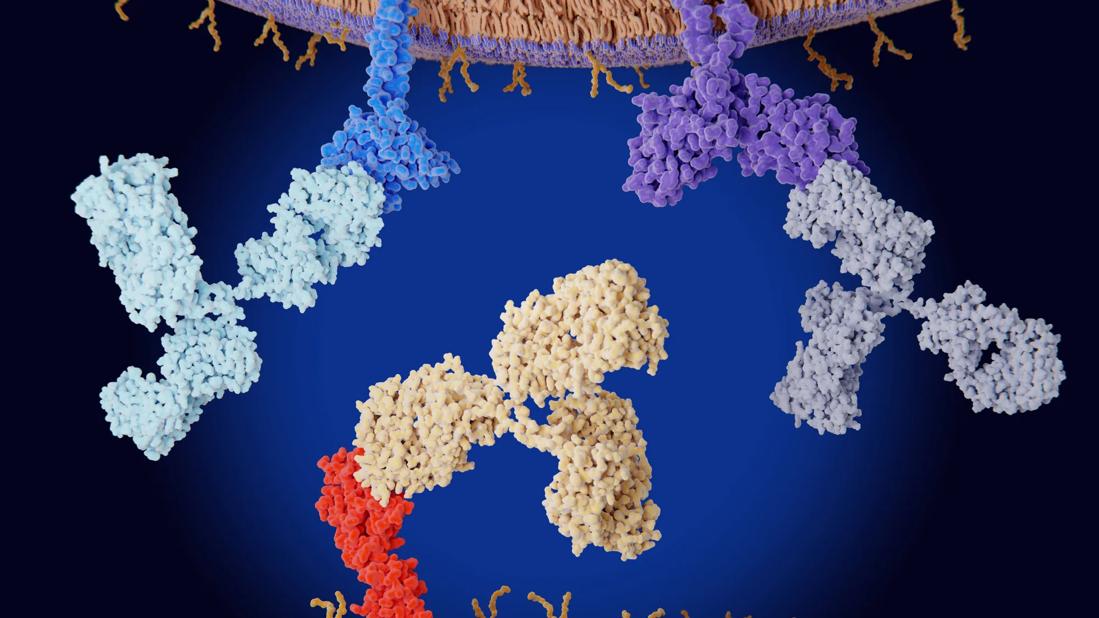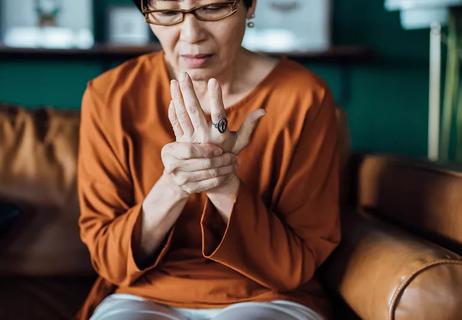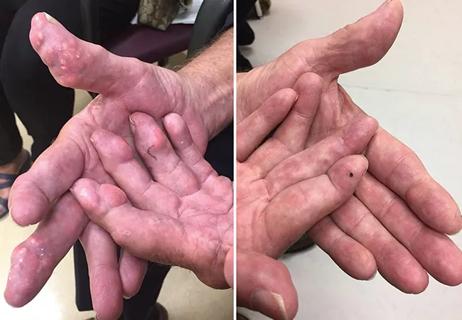Same old disease or something different?

Cassandra Calabrese, DO (@CCalabreseDO)
Advertisement
Cleveland Clinic is a non-profit academic medical center. Advertising on our site helps support our mission. We do not endorse non-Cleveland Clinic products or services. Policy
Checkpoint inhibitor (ICI) therapy has caused a paradigm shift in the field of oncology, producing significant survival benefits in patients with an ever-growing list of malignancies. Their use, however, is attended by a spectrum of immune related adverse events (irAEs), both general and rheumatic, which threaten their overall effectiveness. A critical and presently unanswered question is what proportion of these rheumatic irAEs represent the occurrence of classic rheumatic diseases or, alternatively, represent new clinical variants with potentially different pathogenesis, clinical course and treatment responsiveness. A syndrome resembling polymyalgia rheumatica (PMR) has been described in the setting of ICI; however, little is known about this entity.
With colleagues at Johns Hopkins and the Centre Hospitalier Universitaire de Bordeaux, we sought to assess whether the PMR-like syndrome reported as an irAE from ICI is consistent with the 2012 European League Against Rheumatism/American College of Rheumatology (EULAR/ACR) provisional criteria for PMR.

Required to apply algorithm: age ≥ 50 years, bilateral shoulder aching, and abnormal CRP and/or ESR. A score ≥ 4 is categorized as PMR without ultrasound, and a score of ≥ 5 is categorized as PMR if ultrasound findings are included.
We collected cases from our three centers, as well as all cases reported as PMR or PMR-like illness associated with ICI in the literature to date. After assessing the quality of reporting in all cases, we analyzed the cases to determine whether they fulfilled the 2012 EULAR/ACR provisional criteria for PMR.
Advertisement
From both sources, a total 49 patients were included for analysis. Among the entire group, 37 (75%) had sufficient data to reliably apply the 2012 EULAR/ACR criteria, and of these 28 (75%) fulfilled complete criteria for PMR. A number of cases also demonstrated some clinical features that are unusual in idiopathic PMR.
The main reason for failure to meet criteria was the presence of other joint involvement – most commonly knees, followed by hands and elbows. Of patients from the three centers, 9/20 (45%) had involvement of other joints, 6/20 (30%) had normal inflammatory markers, and five patients had profound morning stiffness. One patient had explosive onset within hours of the patient’s first ICI infusion, with pain and stiffness preventing independent transfer from bed. Two patients had low-positive rheumatoid factor (RF) and one had low-positive anti-citrullinated protein antibodies (ACPA). One case described a patient with remitting seronegative symmetrical synovitis with pitting edema.
This study suggests a high proportion of reported cases of ICI -related PMR fulfill preliminary criteria for PMR, yet clinical details were incomplete in one-quarter of the cases, making verification problematic. Furthermore, in the absence of a gold standard for the diagnosis of PMR, the relationship of ICI-related PMR to the idiopathic form remains unclear, and our data underscore the urgency for prospective registry-based studies with uniform assessment and reporting of data.
Advertisement
Advertisement

Genetic testing at Cleveland Clinic provided patient with an updated diagnosis

From dryness to diagnosis

Older Psoriasis Patients May Experience Quicker Transition

Cleveland Clinic’s Rheumatic Lung Disease program treats patients with complex conditions

Some patients exhibit marked nodulosis due to undiagnosed tophi

A century-old medical tradition inspired the weekly complex-case reviews in Rheumatology

Multidisciplinary care may help clear barriers to treatment

Genetic polymorphisms and response to TNFα blockers